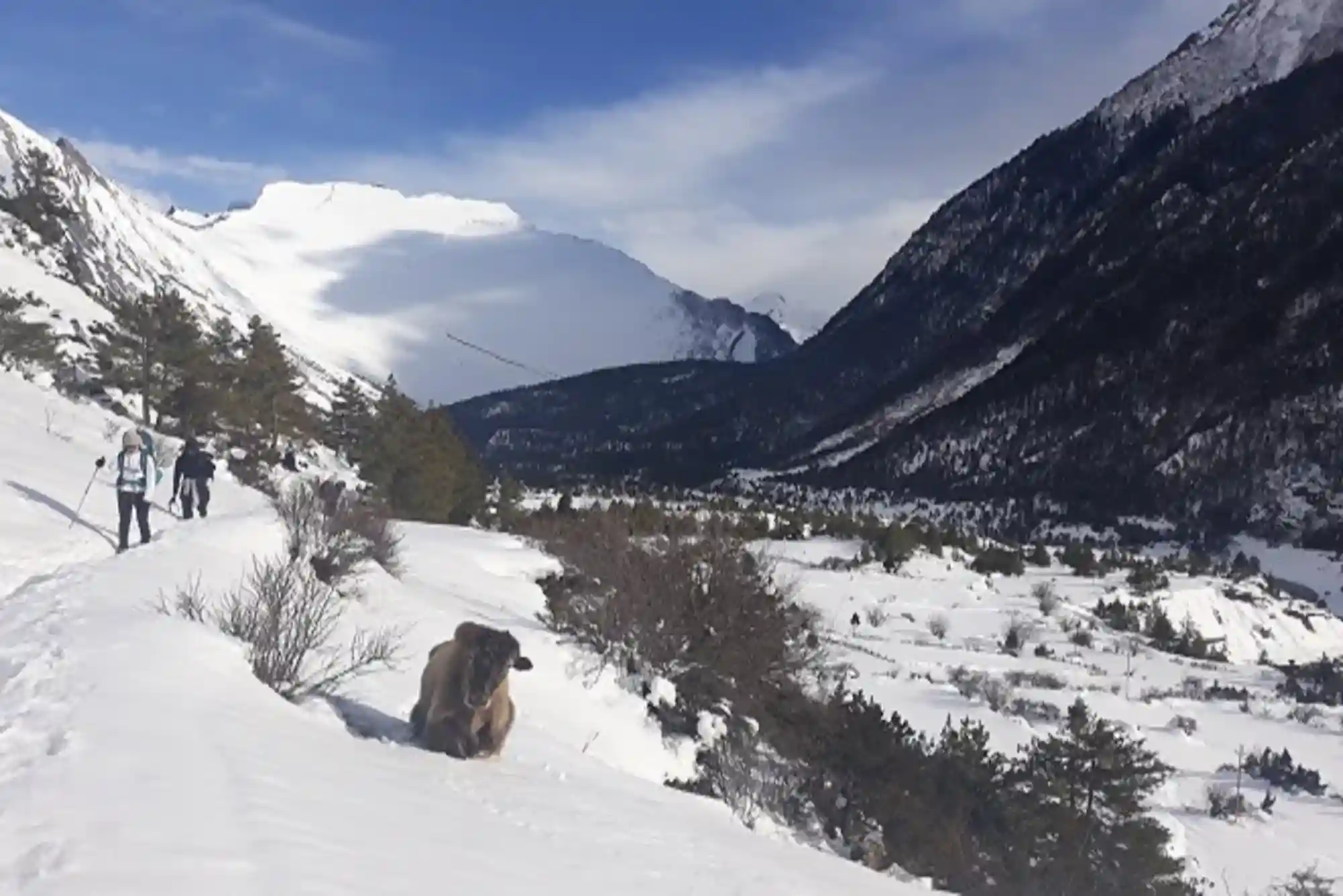Trekking is an exciting adventure that challenges both your body and mind.
It is a popular activity that offers thrills and takes you on unforgettable journeys.
There are countless trekking routes to choose from, ranging from easy hikes for beginners to tough high altitude treks for experienced adventurers.
Famous treks like the Everest base camp trek, Manaslu circuit trek, and Annapurna base camp trek attract thousands of visitors to Nepal each year.
During treks, you will encounter various altitudes, some higher than others.
If you are planning a high-altitude trek like the Manaslu Circuit, it is crucial to prepare yourself for the physical effects of the altitude.
This means getting your mind and body ready to cope with the changes that occur at higher elevations.
Issues during high altitude trekking
Before embarking on a high-altitude trek, like the famous Everest Base Camp route, it is essential to understand the potential challenges you might face.
High altitude trekking can be demanding on your body, especially if you are not adequately informed or prepared.
One common issue that many trekkers encounter during high altitude expeditions is gastrointestinal (GI) problems.
Dealing with gastrointestinal (GI) issues during high altitude treks is a common complaint among trekkers.
Research indicates that approximately 80% of trekkers experience some form of GI distress while trekking at high altitudes.
The reason behind these issues is the strain that high altitude trekking places on your immune system.
As you ascend to higher altitudes, your body undergoes significant physical stress, which can weaken your natural defenses.
Consequently, your stomach is often the first organ to be affected by these changes.
Experiencing gastrointestinal (GI) problems while trekking at high altitudes can stem from two main factors:
Acute Mountain Sickness (AMS)
At high altitudes, despite the oxygen level in the air remaining the same as at sea level (around 21%), your body struggles to effectively deliver oxygen to your cells due to decreased atmospheric pressure.
This condition, known as hypoxia and hypoxemia, is a key contributor to AMS (Acute Mountain Sickness).
Symptoms like diarrhea, nausea, loss of appetite, and vomiting are often associated with AMS, thought to be caused by the lack of oxygen reaching body tissues.
Disruption of the Digestive System
High altitudes can also negatively impact your gastrointestinal (GI) tract, leading to stomach discomfort.
The combination of low oxygen levels and physical stress during high altitude trekking can disrupt your digestive system, resulting in issues like bloating, constipation, and heartburn.
Exercise can make these problems worse.
The reduced oxygen levels create an acidic environment that damages intestinal barrier cells, causing them to become more permeable.
This damage, sometimes referred to as a “leaky gut,” allows toxins to enter your bloodstream, further aggravating GI symptoms.
It is normal to visit the bathroom 3-4 times a day during high altitude treks.
However, if the frequency of restroom visits increases to 7-8 times a day, it may be indicative of a more serious issue, and medical intervention, such as a course of antibiotics like Norflox, may be recommended to address potential infections.
It’s easy to get dehydrated at high altitudes, as you breathe harder and expel more moisture.
Dehydration further disrupts your digestion, leading to constipation or diarrhea.
Here are some helpful tips to prevent gastrointestinal (GI) issues during your high-altitude trek:
-Proper Acclimatization
Proper acclimatization is crucial when trekking at high altitudes.
As you ascend, the air becomes thinner, leading to lower oxygen levels. To allow your body to adjust to these changes, it’s important to ascend gradually and take rest days as needed.
This gradual ascent gives your body time to adapt to the reduced oxygen levels, reducing the risk of altitude-related illnesses and gastrointestinal issues.
UAELinkUp is your premier gateway to fostering meaningful connections within the UAE’s vibrant business community. Offering a robust platform for networking, UAELinkUp helps professionals and entrepreneurs collaborate, share insights, and explore new opportunities. With our comprehensive resources and expert support, UAELinkUp ensures you stay connected and thrive in the competitive landscape. Join UAELinkUp today and elevate your business relationships to new heights.
Stay Hydrated
Staying hydrated is essential during high altitude treks.
Even if you don’t feel thirsty, it is important to drink plenty of fluids to avoid dehydration.
Dehydration can worsen gastrointestinal problems, so maintaining adequate hydration levels is key.
Carry a water bottle and sip water regularly throughout the day to ensure you are staying hydrated.
Follow a Simple diet
Following a simple diet can help prevent gastrointestinal discomfort during high altitude treks.
Stick to bland, easily digestible foods and avoid meat, fatty, greasy, or spicy foods that can be harder on your stomach.
Instead, focus on simple carbohydrates, such as rice and pasta, along with fruits and vegetables.
These foods are gentle on the digestive system and provide essential nutrients to fuel your trek.
Avoid Street/Junk Food
By avoiding street and junk food in the days leading up to your trek, you reduce the risk of encountering foodborne illnesses and digestive issues, allowing you to focus on enjoying your trekking experience without unnecessary discomfort or disruptions.
Instead, opt for fresh, whole foods that provide essential nutrients and energy to fuel your adventure.
Avoid Alcohol and Caffeine
Avoiding alcohol and caffeine is recommended during high altitude treks.
Both alcohol and caffeine can dehydrate the body and irritate the stomach, increasing the risk of gastrointestinal issues.
Instead, opt for water, herbal teas, or electrolyte drinks to stay hydrated without the negative effects of alcohol and caffeine.
Consider Probiotics
Consider taking probiotics before and during your trek to help maintain a healthy balance of bacteria in your gut.
Probiotics can support digestive health and reduce the risk of gastrointestinal discomfort.
Establish Bowel Movement Routine
By starting early and establishing a routine, your body can adapt more easily to any changes it may experience during the trek.
This might involve paying attention to your usual bowel habits and trying to maintain consistency in terms of timing and frequency.
Eating a balanced diet with plenty of fiber-rich foods, staying hydrated, and engaging in regular physical activity can also support healthy bowel function.
Look for probiotic supplements or consume probiotic-rich foods, such as yogurt and fermented vegetables, to support your gut health during your high-altitude trek.
If you do experience GI issues during your trek, here’s what you can do to alleviate the symptoms:
Eat Small, Frequent Meals
Opt for smaller, more frequent meals rather than large ones to ease the burden on your stomach.
Over-the-Counter Medications
Anti-diarrheal medication and antacids can help relieve symptoms like diarrhea and heartburn. Have Medication Ready. Keep your necessary medications handy in case of emergencies.
Rest
Allow your body time to recover by taking breaks and resting when needed.
Stay Calm and Prepared
Be mentally prepared for such situations and stay calm if they arise.
If symptoms persist or worsen, it’s crucial to seek medical attention, especially if you’re concerned about acute mountain sickness.
By following these tips and being prepared, you can help minimize the risk of GI issues during your high-altitude trek and ensure a more enjoyable experience.




